52%
of residents in all residential aged care facilities have dementia
October is National Mental Health Month, an initiative of the Mental Health Foundation Australia, and this year’s theme is ‘Building Resilience: Communities and Connections’.
World Mental Health Day 2022 is also recognised on Monday 10 October, with this year focusing on making mental health a global priority.
In recognition of both events, we spoke to Recovery Coordinator Katharine Davies from Orygen – the world's leading research and knowledge translation organisation focusing on mental ill-health in young people – about how their new Youth Prevention and Recovery Care centre is making a difference.
Depression, anxiety and behavioural disorders are among the leading causes of illness and disability in young people. But with early intervention – and health care facilities designed to meet their needs – young people are supported to get the help they need.
The Victorian Government is investing $141 million to deliver new and refurbished youth prevention and recovery care (YPARC) facilities across the state, as part of its response from the Royal Commission into Victoria’s Mental Health System.
A new mental health facility for young people opened in Parkville earlier this year. Known as Orygen Recovery, the $11.9 million North West Metropolitan YPARC service provides up to 28 days of treatment and support in a residential setting for young people aged between 16 – 25 who are experiencing mental ill health.
Adjacent to the Orygen Youth Mental Health facility, the new centre is built over two levels, and provides 10 private bedrooms on each level. The lower level is called Garrang (meaning wattle) and the upper level is called Bunjil, (meaning eagle). The names were chosen by young people with lived experience of mental ill-health, in consultation with the Wurundjeri Woi-wurrung Cultural Heritage Aboriginal Corporation.
Offering a short‑term ’step up’ from community care or ‘step down’ from hospital, the YPARC service is staffed 24 hours, with support offered in a home-like setting, with shared kitchen, dining, lounge room and activity spaces.
Katharine Davies is a Recovery Coordinator for Orygen, joining North West Metropolitan YPARC centre when it opened earlier this year.
With more than 30 years’ experience as a Registered Psychiatric Nurse and having worked in adult prevention and recovery care services, Katharine has seen first-hand how these important residential facilities are supporting people experiencing mental ill health take important steps towards their recovery.
Orygen has a multi-disciplinary team, consisting of youth wellbeing team peer workers, family peer workers and clinicians. The Youth Wellbeing Team ensures the experiences of young people is non-clinical and focusses on psychosocial recovery and personal recovery goals.
‘The peer space has been very important, which is staffed by two youth peer workers and family peer workers, supporting young people and their family,’ says Katherine.
The clinical element holds clinical governance, provides clinical expertise, and oversight to the program. Input from their leadership team, nurses and psychiatrists ensures they’re using evidence-based practise and treatment within the program. Regular reviews and management of their mental health and risks is also integrated.
North West Metropolitan Youth Prevention and Recovery Care (YPARC) centre opens
The young people at North West Metropolitan YPARC centre vary from 16 to 25 years old, with the average age being 19. Each young person has a therapist or case manager within Orygen, and are willing and motivated to be at Orygen, with most staying for around 25 days.
Katharine explains the young people typically have a specific focus that they want to work on, with most bonding over a common form of social anxiety.
‘The young people start connecting very quickly. Friendships have been developed that continue after they leave. The feedback they are providing us suggests that the group program and key working are beneficial. They are learning and feeling better than when they first arrived,’ said Katharine.
The YPARC services including the new North West Metropolitan Youth Prevention and Recovery Care in Parkville provides an alternative to hospital admission with its flexible, and around-the-clock clinical care for young people, with recovery-focused treatment.
‘One of our aims is to prevent a hospital admission occurring in the first place. We can do this by encouraging early intervention and placement into our program before a deterioration in mental state and therefore an admission,’ Katharine said.
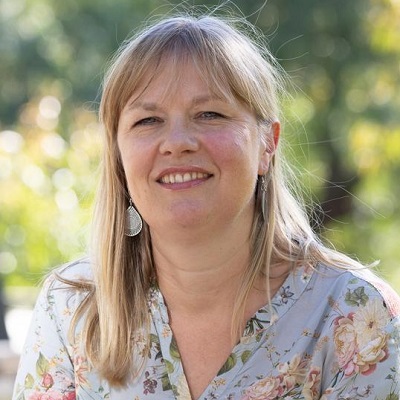
Katharine Davies, Recovery Coordinator at Orygen‘We provide a very active, engaging program and we keep striving to create a family and home-like environment where young people not only feel safe but energised to work on their physical and mental health.’
The YPARC facility in Parkville has been designed to encourage independence, self-care, and routine for young people. The building is bright, modern, and safe, surrounded by peaceful parklands, to support the centre’s non-clinical psychosocial approach.
Group programs offered, such as cooking, have proved a popular way to support young people in staying focused on their goals in an educational, therapeutic and fun manner.
Having a nurse or general clinician on site each day also means young people can work in collaboration with their key nurse, keyworker and their case manager.
‘What is unique to YPARCs is the midway meeting that allows the young person to tell their case manager, community worker or family member what they are doing and what improvements they have made.
‘We also set an exit date well in advance so they have a date that they can work towards and also start the linkages back home,’ explains Katharine.
Since opening its doors in mid-May 2022, the YPARC centre in Parkville has supported many young people experiencing mental ill health. The facility has also improved communication with family through education and family peer worker support, as well as aided young people to overcome their anxiety of connecting with others.
For Katharine, it’s about young people becoming more in control of their own lives to build resilience and contribute back to their community.
‘Meaningful relationships, connections and purpose are all part of the recovery journey. The YPARC we operate here in Parkville is all about instilling this in young people, giving them hope for their future.’
Mental health helplines can provide support if you or someone you know is experiencing mental ill health:
A comprehensive list of counselling, online and phone supports for mental illness is available on the Better Health Channel website.
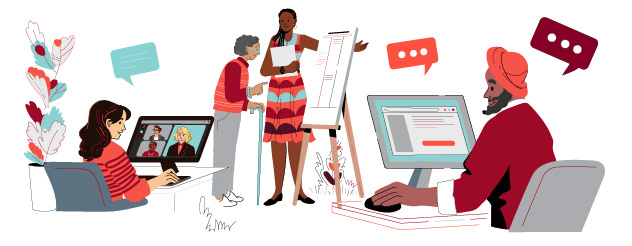
Stay up-to-date on our announcements and projects by signing up to our online newsletters.
World Architecture Day is celebrated annually on the first Monday of October, in parallel with the UN’s World Habitat Day.
The theme for 3 October 2022 is ‘Architecture for Wellbeing’, in response to recent global public health crises including the COVID-19 pandemic and other natural disasters.
Architects play a key role in contributing to community wellbeing. By considering the interlinked factors of physical, emotional, environmental and social wellness in design, they’re helping to improve the health of people.
Placing wellbeing at the forefront of design benefits the health of the people who live, work and visit public buildings.
For this year’s World Architecture Day, we speak to Barbara Bamford, Director of Bamford-Architects, the firm that helped deliver the new North West Women’s Prevention and Recovery Care (WPARC) centre and North West Metropolitan Youth Prevention and Recovery Care (YPARC) centre in Parkville.
Read on to learn more about the projects.
Tell us about your role at Bamford-Architects?
I’m the Director, Design Architect, Office Manager… and more often than I like, cleaner!
How long have you been working in the industry and what encouraged you to start your own architecture firm?
I’ve been an architect for 24 years. Prior to setting up Bamford-Architects 12 years ago, I had worked at two successful and well-known Melbourne design practices. I got to work on a wide range of project types – including care environments, where I found my greatest passion and aptitude.
I wanted to pursue these types of projects on my own terms; I felt keenly that I was “working for the man” and that the man was exclusively a group of men. It was important to me to throw my hat in the ring, to challenge this pattern.
The theme for World Architecture Day is ‘Architecture for Wellbeing’. What does this mean to you?
Architecture impacts physical, emotional, social, and mental wellbeing. This is important across all types and is self-evidently important in healthcare buildings – in particular, residential healthcare.
Bamford-Architects has been researching this via our projects over the last 12 years. We’re exclusively about ‘for purpose’ architecture and firmly believe that our work is only successful when we design buildings that are restorative and positively contribute to environmental, financial and social wellness.
How does Bamford-Architects incorporate wellbeing in design?
We design buildings in the context of how they promote social connection, choice, good eating habits, sense of agency, comfort, and connection to nature. In the latter regard, we work with talented landscape architects to design natural spaces that are soothing and restorative. It can be an intuitive process and is full of trade-offs and negotiations as the design evolves. We revisit the visions and goals – which are defined by the building users – throughout the design process to ensure they don’t get lost.

Barbara Bamford, Director of Bamford-ArchitectsWe can’t think of anything more important than striving to improve the experience and health, as far as practicable, of the people who use the buildings we design.
What are some of the key design considerations for the North West Metropolitan Youth Prevention and Recovery Care centre in Parkville?
The Youth PARC is located on a hilly site adjacent to Royal Park. During the co-design process, we heard from staff and lived experience consumers that they wanted to maximise the outlook and connection to the landscape, which would help differentiate the PARC from their acute facility experience.
The building is made up of two L- shaped houses – each wrapping around an outdoor area. A fully glazed deck runs along the courtyard frontage, maximising the physical and visual connections between the indoor and outdoor areas. This gently connects communal and circulation areas visually, while simultaneously maintaining an appropriate level of separation between private and public spaces. The design responds to the co-design group’s brief for an ‘earthy, non-hierarchical, lounge-y, non-institutional building’.
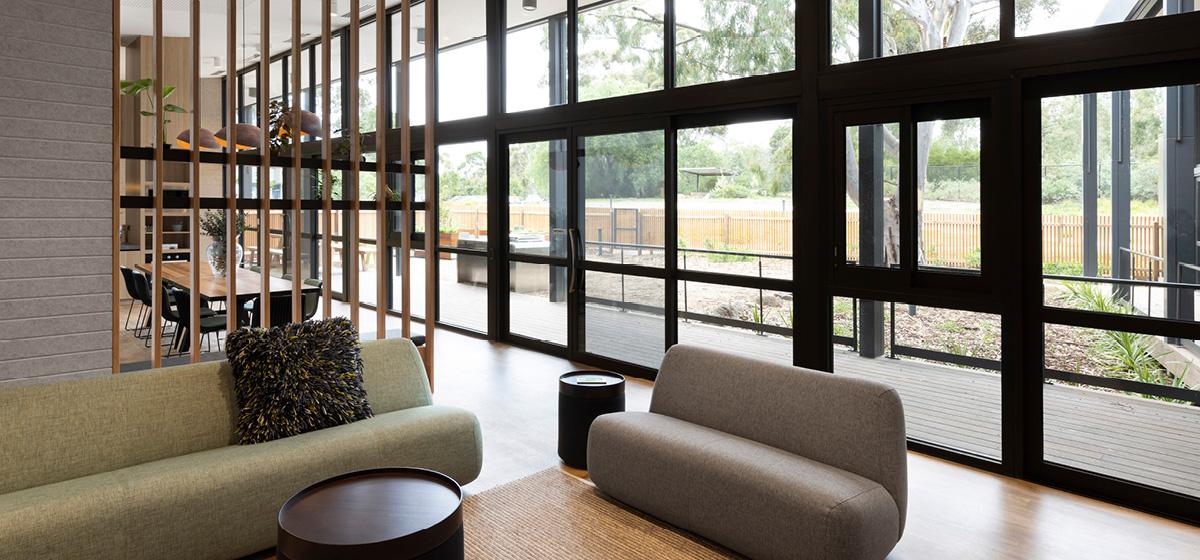
The North West YPARC in Parkville opened in early 2022. Credit: Dianna Snape
What are some of the key design considerations for the North West Women’s Prevention and Recovery Care centre?
The key driver was to create a sense of safety and privacy, without a sense of enclosure. Several fully and partially enclosed courtyards are centrally located within the building, with communal spaces and circulation looking onto these areas.
There are a good range of internal and external communal spaces so that the women using the facility – some of which have young children – can choose the space that’s appropriate for them, at that time. These include sitting nooks, several lounge spaces to choose from, a dedicated children’s garden, a generous deck and outdoor sitting area, and a veggie garden.
How do the different design elements promote wellbeing?
In both projects there are strong visual connections across all courtyards and throughout communal spaces and circulation areas. The planning flows from one space to the next, so that spaces are loosely appreciable from all other areas. This encourages social interaction by allowing staged entry from private to communal spaces.
Each facility has strong physical and visual connections to outdoor spaces, promoting easy use of these spaces for therapy, play, dining, gardening and quiet relaxation. Abundant daylight is provided in all spaces and all materials are selected for their warmth and minimal impact on health and the environment.
How does Bamford-Architects typically go about designing these facilities?
We relish the project briefing / co-design process. We try to make this as collaborative as possible and design in real-time wherever possible. We learn so much from the stories and insights of staff and lived experience representatives.
It’s one of the areas of our work that gives us the greatest joy – engaging with people who because of their life experience have enormous value to add. They quickly bring into focus what works and where thinking has become tired. At its best, this is an empowering process for all concerned and absolutely delivers the best built result.
What design input has Bamford-Architects provided on these projects that make you most proud?
PARCs come with quite a technical brief; we love the challenge of working out how to detail the spaces, fixtures and fittings that come with the brief, to provide generous and warm environments, that don’t read as institutional or clinical, while meeting requisite safety, operational, servicing, and of course budgetary constraints. With each project we learn how to do this a little better. It makes us proud that what we learn along the way informs the next project – getting ever-better results.
How has design been used to create a homelike environment across both facilities?
For us, the term ‘home-like’ is just a starting off point; we extend this description to something that’s familiar and legible, but also connected, comfortable, and a bit special. We aim to create spaces that are beautiful and generous and nurturing, for those who care, are cared for and visit our buildings.
Kitchens are warm and domestic looking but are located and planned so that they’re central, visible, accessible and comfortable for multiple users. Kitchen and living spaces are all very generous in volume – more so than most homes – so that they are comfortable for multiple residents who may have heightened sensitivity to people around them.
Bedrooms are required to meet a similar safety level as an acute mental health facility. Acute facilities can read as industrial design objects. We actively resist treatments that could be reminiscent of an acute bedroom. We heard loud and clear from lived experience representative that’s the very last thing they want a PARC to feel like.
How has the team used co-design to aid the design process of PARC centres and how has it benefitted the wellbeing aspect?
The co-design process leads the design process. We try to make this as collaborative as possible and design together in real-time wherever possible. We routinely come to design conclusions that we wouldn’t have considered without the co-design process and certainly not without the frank insights from lived experience representatives.
Wellbeing is promoted by having the voices of those who will use the building embedded in the design. It makes the design – all about promoting wellbeing – a better solution. Which is a win for all involved.
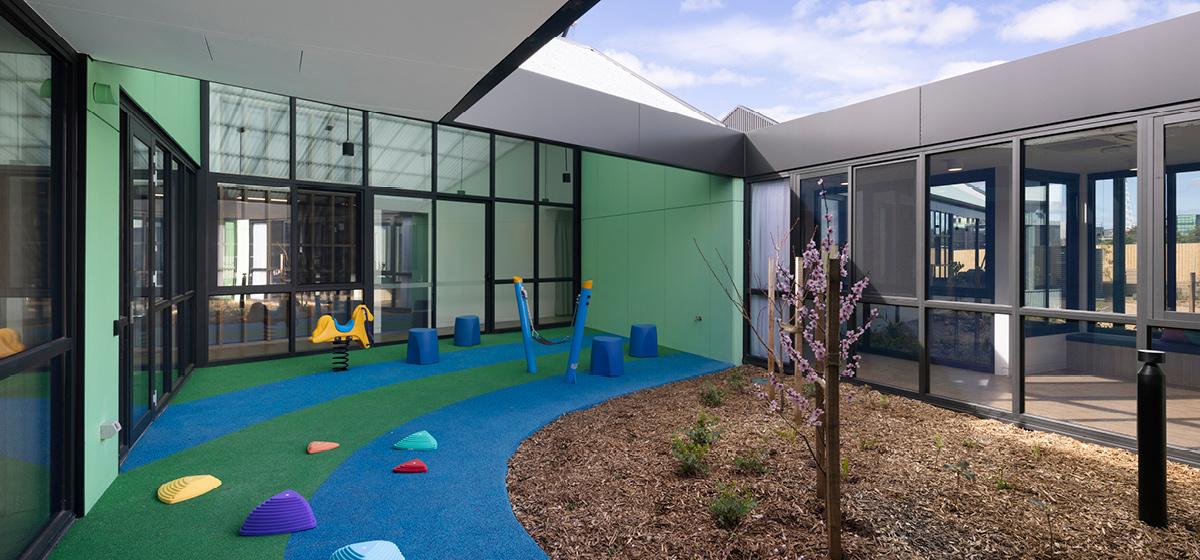
The North West WPARC, which opened in September 2022, provides a supportive environment for women who can stay with their children. Credit: Dianna Snape
The Victorian Government invested $11.9 million in the new North West Metropolitan Youth Prevention and Recovery Care (YPARC) centre in Parkville.
The 20-bed facility provides short and medium-term treatment and support in a residential setting for young people experiencing mental illness in Melbourne’s west.
The new facility is one of 25 prevention and recovery care centres across Melbourne and regional Victoria, providing community-based treatment for young people aged 16 - 25 who are unwell or recovering from mental illness.
Located in Parkville’s mental health precinct alongside the Orygen Youth Mental Health facility, the new centre will provide care and support to 200 young people each year.
Find out more about the North West Metropolitan Youth Prevention and Recovery Care centre on our dedicated project page.
The Victorian Government invested $8.4 million to build a new Women's Prevention and Recovery Care (WPARC) centre in Melbourne’s west to support women experiencing mental ill health.
Based near Sunshine Hospital, the 12-bed centre is the first prevention and recovery care centre to provide residential treatment and support for women with accommodation for dependent young children.
The centre provides treatment for women who are becoming mentally unwell, or who are in the early stages of recovering from an acute mental illness and need a short-term additional support.
Find out more about the North West Women’s Prevention and Recovery Care centre on our dedicated project page.
In this issue learn more about our projects and recent announcements including:
Subscribe to our mailing list to keep up to date on our announcements and project updates.
Medical equipment and engineering infrastructure
Twenty-eight health services across Victoria are sharing $85 million in funding to upgrade or replace vital medical equipment and engineering infrastructure
Cutting-edge equipment funded as part of the Medical Equipment Replacement Program includes CT scanners and digital x-ray units.
Generators, lifts and emergency lighting upgrades will be funded through the Engineering Infrastructure Replacement Program.
Find out more about what the Medical Equipment Replacement Program and Engineering Infrastructure Replacement Program will deliver.
Surgical equipment
Thirty-five health services are sharing $20.25 million in funding from the Surgical Equipment Innovation Fund.
The funding will upgrade and replace 178 items of medical equipment at busy hospitals across the state.
From Melbourne to Ballarat and Shepparton to the Bass Coast, the Fund was established to ensure health services can upgrade their surgical equipment and diagnostic machines with the latest technology to help get more patients into surgery.
Learn more about the Surgical Equipment Innovation Fund.
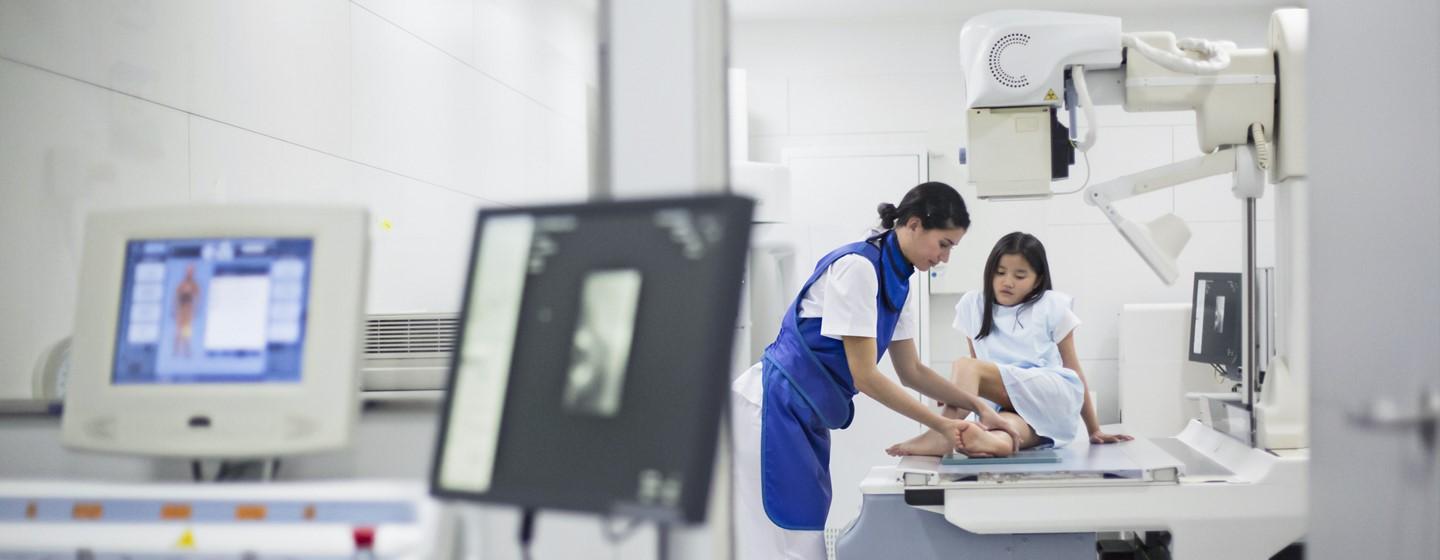

The Victorian Government has committed more than $900 million to deliver a new Melton Hospital in Cobblebank, transforming the outer west.
The fully electric hospital will deliver 24/7 emergency, at least 274 beds, an intensive care unit, maternity and neonatal services, mental health services, radiology services and outpatient care.
Once completed, the new Melton Hospital will have capacity to treat 130,000 patients each year and see almost 60,000 patients in the emergency department.
See how we’re building your new Melton Hospital
See how we’re building your new Melton Hospital
Women in Melbourne’s western suburbs now have better access to mental health support with a Victorian-first centre now open.
The new $8.4 million North West Women’s Prevention and Recovery Care centre (WPARC) is open, providing vital mental health services.
It is the first purpose-built WPARC where women can stay with dependent children.
The centre provides short-term mental health care and will help up to 150 women each year receive treatment in a safe and welcoming environment.
Explore the Women’s Prevention and Recovery Care centre
The new $81.58 million Wantirna residential aged care facility is now complete.
The four-storey facility will provide 120 older Victorians with a safe, modern and comfortable place to call home. Every resident will enjoy the dignity and independence of their own private bedroom, complete with ensuite bathroom.
Take a look around the Wantirna aged care facility

See our latest milestones:


Recently published:
We encourage suppliers to register on Buying for Victoria (tenders.vic.gov.au) and the Industry Capability Network (ICN Gateway) to view VHBA offers to supply. Find out more about VHBA procurement.

Stay up-to-date on our announcements and health, mental heath and ageing projects by signing up to our online newsletters.
We invited the community to come and see us to find out more about how we’re building your new Melton Hospital and to have your say.
The session was for drop-in at any time – no registration necessary.
We invited the community to come and see us to find out more about how we’re building your new Melton Hospital and to have your say.
The session was for drop-in at any time – no registration necessary.
On screen text: People with dementia account for 52% of residents in all residential aged care facilities. This number is even higher in public sector facilities. New design thinking for these facilities aims to support the independence, privacy and dignity of residents.
IMAGES: Close up shot of Creswick Nursing Home’s new dementia friendly unit, followed by drone shot of facility. Drone footage of St George’s Hospital aged care facility, followed by shot of garden pathway in Edenhope aged care facility.
Richard Blight, architect of Creswick facility: "I think in the dementia space, in the aged care space, there's a lot of really good architects working. We're all out to do the same thing, which is really improve residential aged care facilities.
Our focus is to build solutions which aren’t cookie cutter solutions. They're all custom designed for the particular community we're designing them for. It's a really exciting space to work in.
The people and their family and the carers will spend the last probably weeks, months, days in their life and to design an environment which can make these people feel more comfortable and improve the quality of their life. I think that's just a real privilege."
IMAGES: drone shots of Creswick and view upwards of St George’s apartments. Interior lounge areas and single bedroom at Creswick, drone shot of greater Creswick area.
Golden Oaks aged care facility frontage, bedroom and shared kitchen/dining spaces at St Georges
Sally Delany, Manager Design services, Victorian Health Building Authority: "Our residents are coming in more acute than they used to in the past. The most important thing is that we design flexible spaces that can adapt over time for changing needs of our community. It enhances and encourages their own independence and capacity to live as independently as they can."
IMAGES: rising drone shot of Creswick new unit, art collages on table
Richard Blight: "We were really sort of conscious to make as much effort as we can to engage with the residents. We run art therapy programs which really are a way of workshopping with residents to figure out what they think home is. We run these workshops with a sheet of paper, a drawing of a house on it, and we ask them, through the process of collage, just to stick pictures down of what they think home means to them."
IMAGES: bedroom and brightly coloured hallway at St Georges, bedroom at Creswick
Sally Delany: "One way of creating a homelike environment or also to trigger clues on where your bedroom is, is to have different colours on bedroom doors or a memory box, maybe photos of the family, so it's easier for the resident to find their actual bedroom."
IMAGES: dining table at Creswick
Richard Blight: "Making sure there's not too much contrast on the floor, making sure that the light isn't too bright."
IMAGES: bathroom and toilet with different coloured seat
Sally Delany: "We now have a different colour toilet seat to the floor. If the toilet seat is the same colour as the toilet and maybe the floor then it's very, very difficult for a resident."
IMAGES: drone shot of Creswick, followed by lounge room, and external garden
Richard Blight: "We've increased - we didn't want it to feel like a dementia facility. It's designed to be dementia-centric but it's not designed to look dementia-specific. It's a pod in itself and that forms a community."
IMAGES: drone shot of Creswick featuring integrated external courtyard, dining and kitchen area
Sally Delany: "Creswick now has a wonderful internal courtyard and it also assists with the wayfinding of the resident, as they're walking around the facility from their bedrooms to the shared kitchen and lounge areas."
IMAGES: external garden walkways at Edenhope aged care facility featuring brightly coloured bench seats
Richard Blight: "I think one of the things when designing external space is - is they need just as much consideration as internal spaces. If these spaces aren't directly connected to the interior social spaces of the facility, they just don't get used."
Sally Delany: "There's much more of a natural flow and a natural interaction between the staff and residents without residents feeling like their spaces are being invaded by staff."
IMAGES: Creswick breakout lounge, bedroom and large dining room, view of new unit from bushland
Richard Blight: "Talking to the staff is a real critical step in delivering innovation. When I'm walking around the facility, they probably think, "Oh, there's that pesky architect again. Whether it's the cleaner, I want to know whether we got the vinyl right or whether it's a nurse, I want to know how people are using the social spaces. So, I think the challenge, as a designer, is how you take all those limitations and still come up with something with something which respects the need of these residents. Make things better through understanding where it doesn't work and where it does work from a first person perspective.
A sliding transition screen then displays the Victorian Government logo and Victorian Health Building Authority logo and web address vhba.vic.gov.au
End of transcript
Dementia-friendly environments are created using a flexible approach that maximises people’s freedom and involvement through supportive, familiar, meaningful and safe surroundings.
Dementia-friendly design works to maximise independence and safety using intuitive and ergonomic design. It supports people with a broad range of functional needs such as reduced mobility, sensory losses and a wide variety of complex conditions.
The design approach carefully considers both physical and social environments. It looks at people’s unique needs and abilities, and how they maintain a sense of purpose through familiarity and connection.
Sally Delany, Manager Design Services, Victorian Health Building Authority‘Dementia-friendly design enhances wellbeing by creating environments that are welcoming and meaningful. It enables the resident to freely navigate their home indoors and outdoors. It promotes independence by creating safe and intuitively engaging spaces – maximising helpful stimulation and minimising unhelpful stimulation that may lead to increased levels of disorientation and anxiety.’
of residents in all residential aged care facilities have dementia
give residents choice and independence
provide dignity and the ability to personalise
provide connection to the natural environment
A homelike environment is key to dementia friendly design. While home environments can take many forms, they all share certain domestic qualities.
A homelike environment:
Richard Blight is a Director at Blight, Blight & Blight – the architecture firm who designed the $3.2 million dementia-friendly unit at Creswick Nursing Home. Richard explains how their team engages with residents to establish what home means to them.
Richard Blight, Director, Blight, Blight & Blight‘We run art therapy programs which are a way of workshopping with residents to figure out what they think home is. We run these workshops with a sheet of paper that has a drawing of a house on it – and we ask them through the process of collage to stick pictures down of what they think home means to them.’
When building an aged care facility, design strategies to create a homelike environment include:
The completed $55.57 million St George’s Hospital aged care facility (Berengarra) was the first stage of the Victorian Government’s Modernisation of Metropolitan Melbourne Public Sector Residential Age Care Strategy.
The 90-bed facility is made up of two separate three-storey houses, with pitched roofs and brickwork to create a homelike feel. Each floor is divided into small households, creating a familiar environment that is easier to navigate. Key facilities such as dining and lounge areas are close by – also assisting those who cannot travel long distances due to frailty.
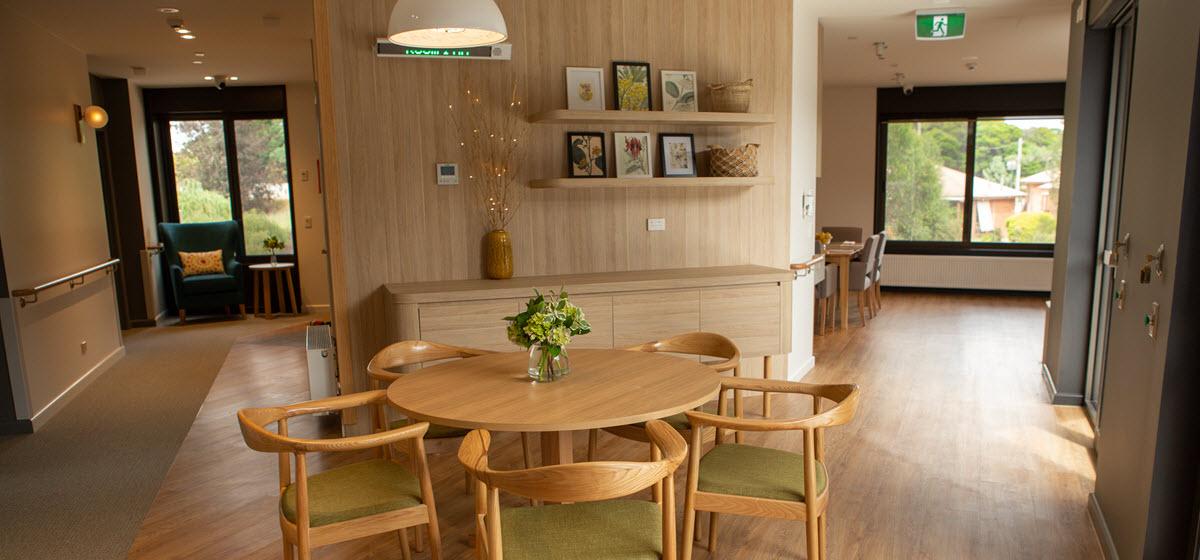
A communal living room within the Creswick Nursing Home dementia friendly unit
Individual bedrooms and bathrooms provide dignity and independence to residents in aged care. The $6.3 million Edenhope and District Memorial Hospital redevelopment included the construction of 18 private rooms and ensuites. This replaced the existing shared rooms, allowing providing privacy to residents.
Easy access to outdoor areas is important when creating a homelike environment. These areas need to be welcoming, engaging and safe.
At the dementia-friendly unit at Creswick Nursing Home, rooms are clustered around a central courtyard that can be sealed off from the rest of the facility. This allows residents to circulate freely and safely. Two outdoor seating areas encourage residents to spend time outdoors, while raised wheelchair-accessible garden beds allow residents to garden.
The outdoor space provides residents with choice. They can enjoy the outdoor space actively, or simply spend time on their own. The courtyard design also means that outdoor areas are visible from indoors, increasing a sense of connection to the natural environment.
Richard Blight, Director, Blight, Blight & Blight‘One of the things when designing external spaces is that they need just as much consideration as internal spaces. If these spaces aren’t directly connected to the interior social spaces of the facility – they just don’t get used.’
The safe garden space at Mountview Home, Maldon Hospital, has improved the experience of residents living with dementia by creating a walking path and accessible garden within an enclosed courtyard
A diverse range of common areas facilitate choice and lifestyle options for residents. It also supports them to maintain family and community connections.
For example, once construction of the $81.58 million new Wantirna residential aged care facility is complete in 2022, the facility will include multipurpose common areas, as well as a community room, sacred space and café. This will give residents greater choice, with access to areas for socialising, activities or quiet time alone.
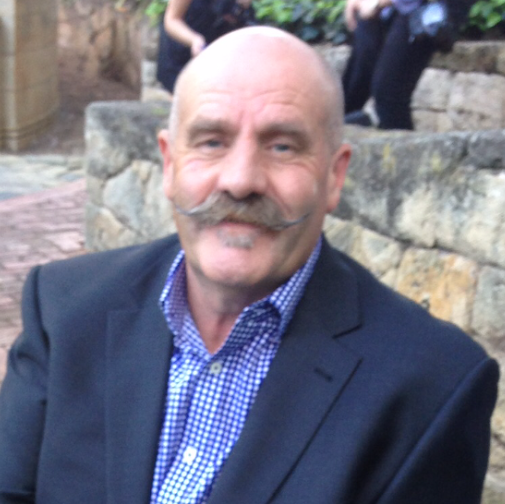
Michael Walker, Principal Advisor, Universal Design, Victorian Health Building Authority‘The more we get away from the institutionalised approach to aged care, we’re going to have better outcomes. When we make environments more homelike, people feel welcome, they feel safe and they feel included.’
Making public sector aged care facilities dementia-friendly is part of the Victorian Government’s work to modernise public residential aged care facilities.
The interim report released on 31 October 2019 by the Aged Care Quality and Safety Royal Commission signalled the need for fundamental system reform to better support quality and safety. This includes a focus on building design.
We’re working with the Department of Health’s Aged Care Branch to update our Public sector residential aged care (interim) facility design guidelines to respond to some of the recommendations from the Royal Commission. The updated guidelines will also be informed by our recently released Universal design policy and charter.
The Department of Health will also be updating its dementia-friendly environments guidance and resources in consultation with a broad cross-section of stakeholders, including people living with dementia.
Valda Groves, Manager Public Sector Residential Aged Care Services Infrastructure & Planning, Commissioning & System Improvement Division, Department of Health‘This collaboration has been important in developing a whole design approach and investment strategy to enhance environments to enable people with dementia to continue living a life of meaning and value and maintain connections with loved ones in a familiar and supportive home. This approach also assists staff to deliver a person-centred model of care.’
As part of the Modernisation of Metropolitan Melbourne Public Sector Residential Aged Care Strategy, the Victorian Government is investing:
For rural and regional Victoria, $65 million was announced as part of the 2021-22 State Budget to modernise and upgrade public residential aged care services:
The Victorian Government has also established the $10 million Rural Residential Aged Care Facilities Renewal Program. The program enables rural and regional residential aged care services across Victoria to invest in modern infrastructure and equipment.
By delivering dementia-friendly residential aged care facilities, we’re ensuring access to high quality public aged care close to home. This will support older Victorians to remain independent and keep well for as long as possible.
This article was originally published on 17 March 2022.
Across Victoria, 100,000 people are living with dementia – and this number is predicted to nearly double in the next 20 years.
Public sector residential aged care services play an important role in supporting access to services for people who:
These services aim to promote residents’ independence, choice and dignity to support their health, wellbeing and quality of life.
People with dementia account for 52 per cent of residents in all residential aged care facilities. This number is even higher in public sector residential aged care services.
As the largest public provider of residential aged care in Australia, the Victorian Government has committed to modernising public sector residential aged care. This includes replacing outdated public aged care homes with purpose-built, modern facilities. It also includes updating, refurbishing and redeveloping existing aged care services.
As part of the modernisation of public sector aged care in Victoria, we have worked closely with the Department of Health’s Aged Care Branch to develop our public sector residential aged care (interim) facility design guidelines.
The guidelines provide an outline on how to deliver residential aged care services that are homelike and familiar, while enabling contemporary and innovative models of aged care. They also include information on how to design dementia-friendly environments.
The Victorian Government has committed more than $900 million to deliver a new Melton Hospital in Cobblebank, which will transform care in Melbourne’s booming outer west, giving the community access to better healthcare facilities closer to home.
The fully electric hospital will deliver 24/7 emergency, at least 274 beds, an intensive care unit, maternity and neonatal services, mental health services, radiology services and outpatient care.
Once completed, Melton Hospital will have capacity to treat 130,000 patients each year and see almost 60,000 patients in the emergency department.
Major construction is underway and expected to be completed in 2029.
This landmark project for Melbourne’s outer west is being delivered by VHBA in partnership with the Exemplar Health consortium and Western Health.

Melton is one of the fastest growing communities in Australia. The new Melton Hospital is being built to meet the growing demand for health services in Melbourne’s outer west, driven by population growth, increasing use of hospital services and the high proportion of young families in the area.
The new Melton Hospital will be a public hospital. This much-needed project is being delivered in partnership with Western Health, who will operate the hospital.
The new Melton Hospital will include:
The new hospital is being built at 245-267 Ferris Road, Cobblebank, within the future Cobblebank Metropolitan Activity Centre.
Benefits to this site location include:
It will provide an essential link with services at other public hospitals in the western region – including Sunshine Hospital and the new Footscray Hospital.
The new Melton Hospital is being delivered as a public private partnership (PPP) under the Partnerships Victoria Framework.
The Exemplar Health consortium was awarded the contract to deliver the new Melton Hospital.
The Exemplar Health consortium includes:
Melton Hospital will be a public hospital, with all clinical health services operated and provided by Western Health.
The PPP model involves an extensive and competitive tender process to bring together a private consortium to design, construct, finance and maintain the new facility for up to 25 years.
We have an excellent history of successful hospital PPP projects here in Victoria, notably:
The new Footscray Hospital and Frankston Hospital redevelopment are also being delivered as PPP projects.
INVESTMENT
BEDS
EMERGENCY CARE
WORKS START
CONSTRUCTION COMPLETE

As one of the most significant new hospital projects in the state, it takes a lot of planning and meaningful engagement with the local community and a range of stakeholders to help shape the services, priorities and look and feel of a new hospital.
It’s a complex job but we’re well on our way…

It takes a lot of planning and many conversations to work out what the right hospital for your community will look like.
Throughout the process, we engage with service users, people with lived experience, staff, experts and the local community to identify the new hospital’s requirements to ensure we deliver an asset that reflects the community it serves.
Architects, engineers, health planners, hospital staff and community advisory groups all contribute to shaping the design, by considering things like how the patient will move through the hospital.
Opportunities for community input will be provided in multiple ways to ensure everyone can have their say, such as through the community consultative committee, information sessions and online surveys.
Community input will be captured and provided to shortlisted bidders, with the opportunity to be reflected in the design and operation of the new hospital.
We’re committed to keeping you informed and involved in the development of your new Melton Hospital.

Sign up to get the latest news, announcements and updates about the New Melton Hospital Project, delivered straight to your inbox.

Major infrastructure partners were invited to attend the New Melton Hospital Project’s inaugural industry briefing on 6 October 2022.